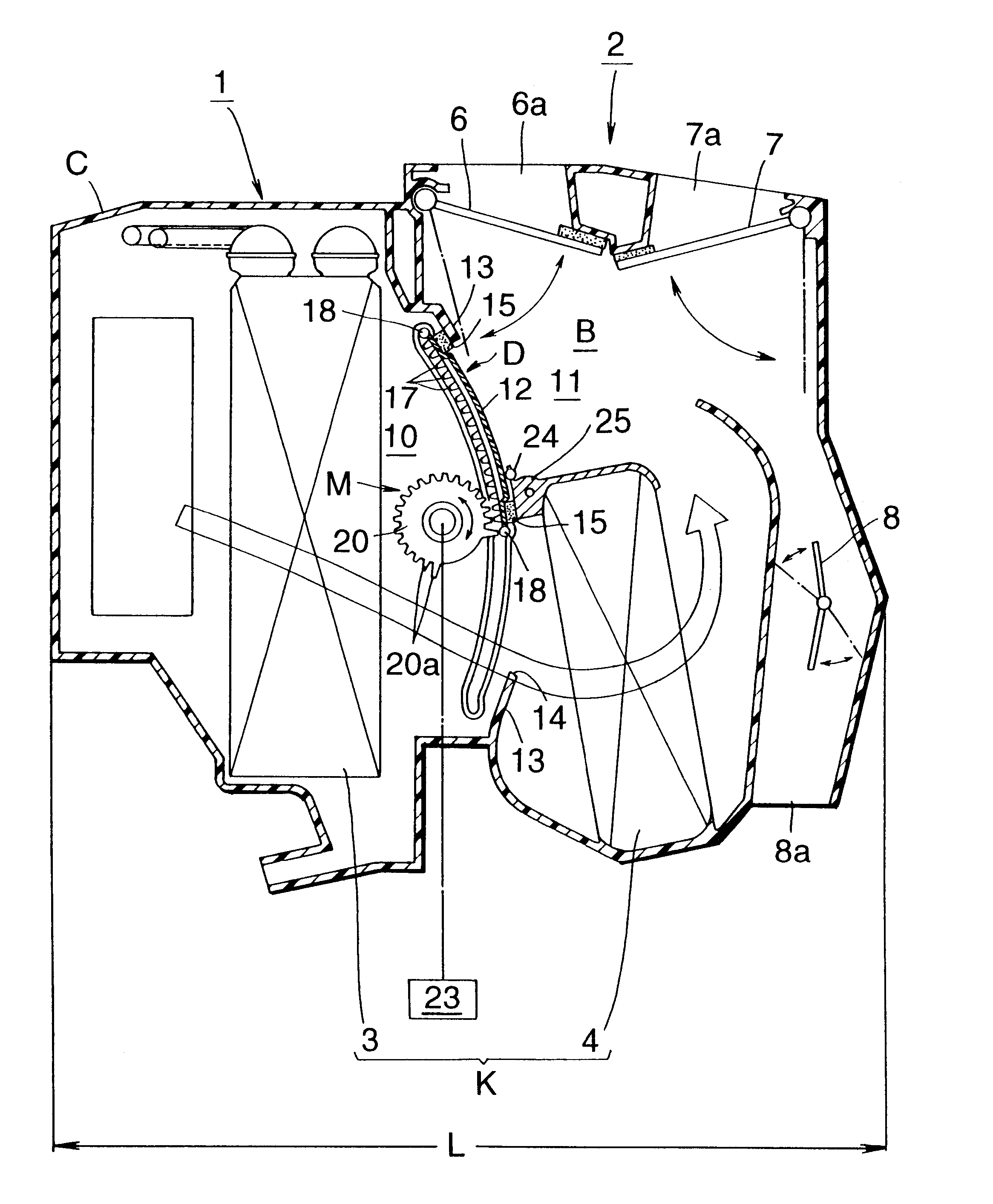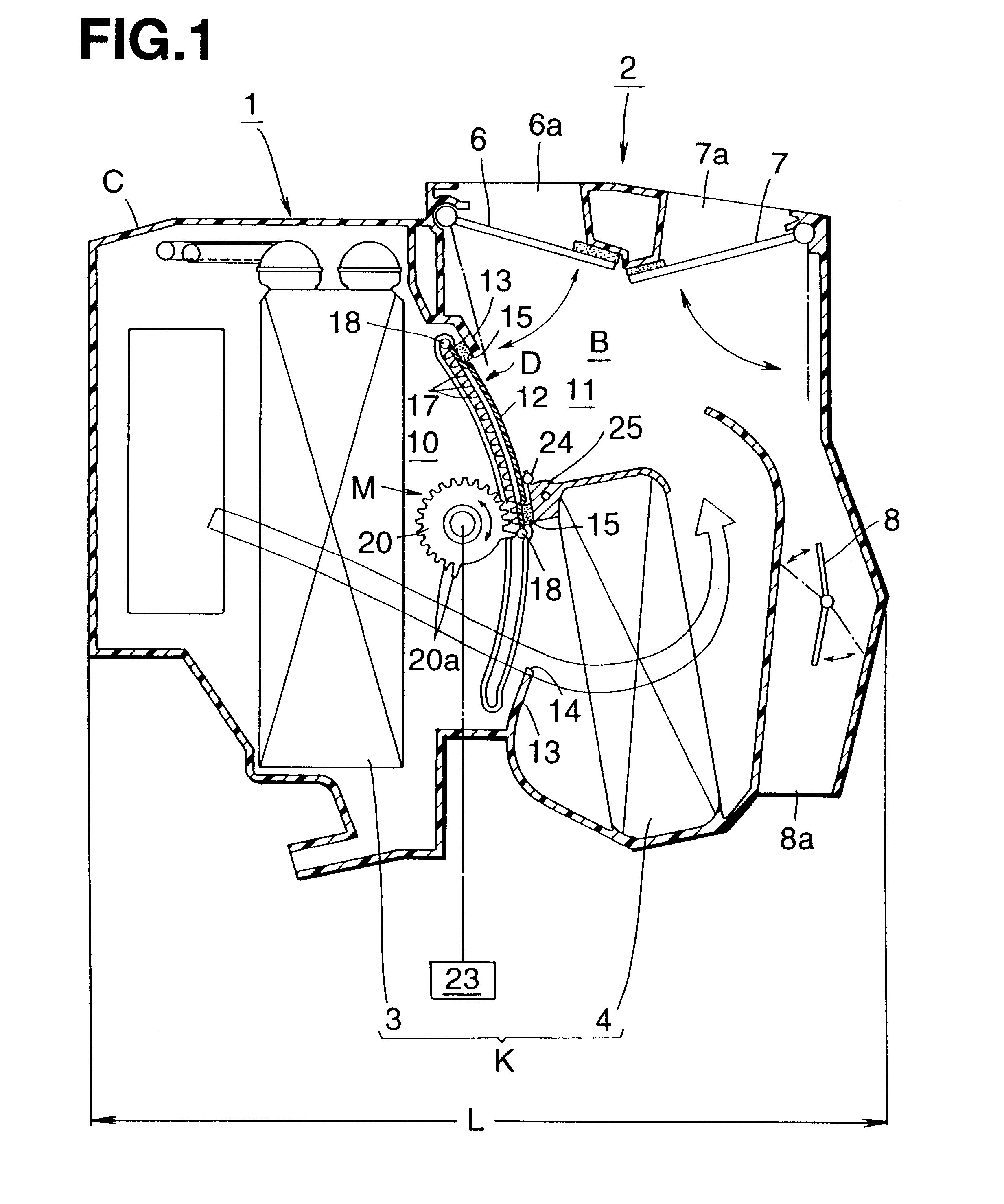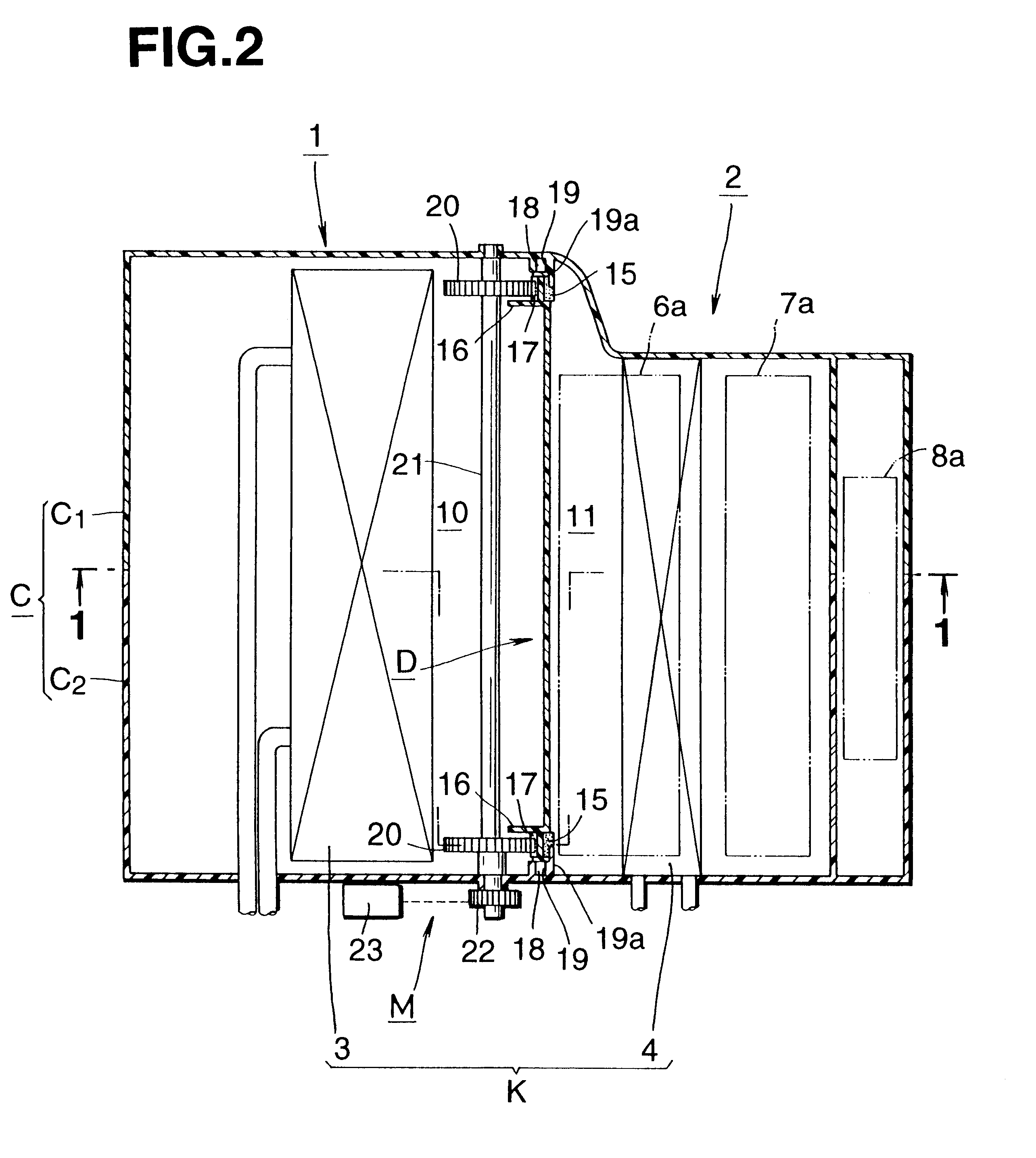Door mechanism for automobile air conditioner
a door mechanism and air conditioner technology, applied in vehicle parts, vehicle heating/cooling devices, vehicle cleaning, etc., can solve the problems of complicated and high-cost construction, further limited small vehicle cabin space, and difficulty in controlling the distribution of cooled air and warmed air
- Summary
- Abstract
- Description
- Claims
- Application Information
AI Technical Summary
Problems solved by technology
Method used
Image
Examples
embodiment-1
FIG. 1 is a drawing showing an automotive air conditioning device which is an embodiment-1 of the present invention, which is a sectional view taken along the line 1--1 of FIG. 2. FIG. 2 is a plan view of FIG. 1, FIG. 3 is a horizontally sectional view of a door mechanism, FIG. 4 is a partially cut perspective view of a door, FIG. 5 is an end view taken along the line 5--5 of FIG. 3, FIG. 6 is an enlarged illustration showing an essential portion of the door, FIG. 7 is an illustration showing a cam groove portion, and FIG. 8 is an illustration of a supporting roller, which is a sectional view taken along the line 8--8 of FIG. 7. It is to be noted that parts similar and corresponding to those of FIGS. 18 and 19 are denoted by the same reference numerals as those of FIGS. 18 and 19.
As is shown in FIG. 1, a door mechanism of an automotive air conditioning device of the embodiment-i is applied to a mix door.
As is shown in FIG. 1, in the automotive air conditioning device, there is used ...
embodiment-2
FIG. 9 is a drawing showing essential portions of an automotive air conditioning device which is embodiment-2 of the present invention. Members and parts similar to those of FIGS. 1 to 8 are denoted by the same numerals.
As is shown in FIG. 9, a door mechanism of an automotive air conditioning device of the embodiment-2 is applied to an intake door.
An intake unit 30 associated with the embodiment-2 is a device which selectively intakes vehicle outside air (outside air) and vehicle inside air (inside air) and conditions the mixed air by flowing the same in an air conditioning device before blowing into the vehicle cabin. Like in the case of the above-embodiment, it is desirable to reduce a height "H" of an intake door D installed in the unit. In fact, flatten-shape of the intake door is preferable.
In the intake unit 30, air intake from the upstream air passage 10 is made by running a fan 31 via a motor 32. The upstream air passage 10 has an outside air intake passage 10a and an inside...
embodiment-3
As is shown in FIG. 11, an automotive air conditioning device of this embodiment is connected to an intake unit 160 which, after introducing the outside or inside air, leads the air to a downstream portion. The intake unit 160 is formed with both an outside air intake port 161 for introducing the outside air and an inside air intake port 162 for introducing the inside air for the air circulation. Selection of the ports 161 and 162 is made by an intake door 163. In order to forcibly transfer the air from the intake port 161, the intake port 162 or both of them to the downstream portion, there is arranged a fan which is driven by a motor 164 installed in the intake unit.
The automotive air conditioning device 150 comprises a case C which is integral with a frame of the cooler unit 101 and a frame of the heater unit 102. In an upstream part of an air passage of the case C, there is arranged an evaporator 103 which is connected to a refrigerating cycle (not shown). The introduced air is ...
PUM
 Login to View More
Login to View More Abstract
Description
Claims
Application Information
 Login to View More
Login to View More - R&D
- Intellectual Property
- Life Sciences
- Materials
- Tech Scout
- Unparalleled Data Quality
- Higher Quality Content
- 60% Fewer Hallucinations
Browse by: Latest US Patents, China's latest patents, Technical Efficacy Thesaurus, Application Domain, Technology Topic, Popular Technical Reports.
© 2025 PatSnap. All rights reserved.Legal|Privacy policy|Modern Slavery Act Transparency Statement|Sitemap|About US| Contact US: help@patsnap.com



